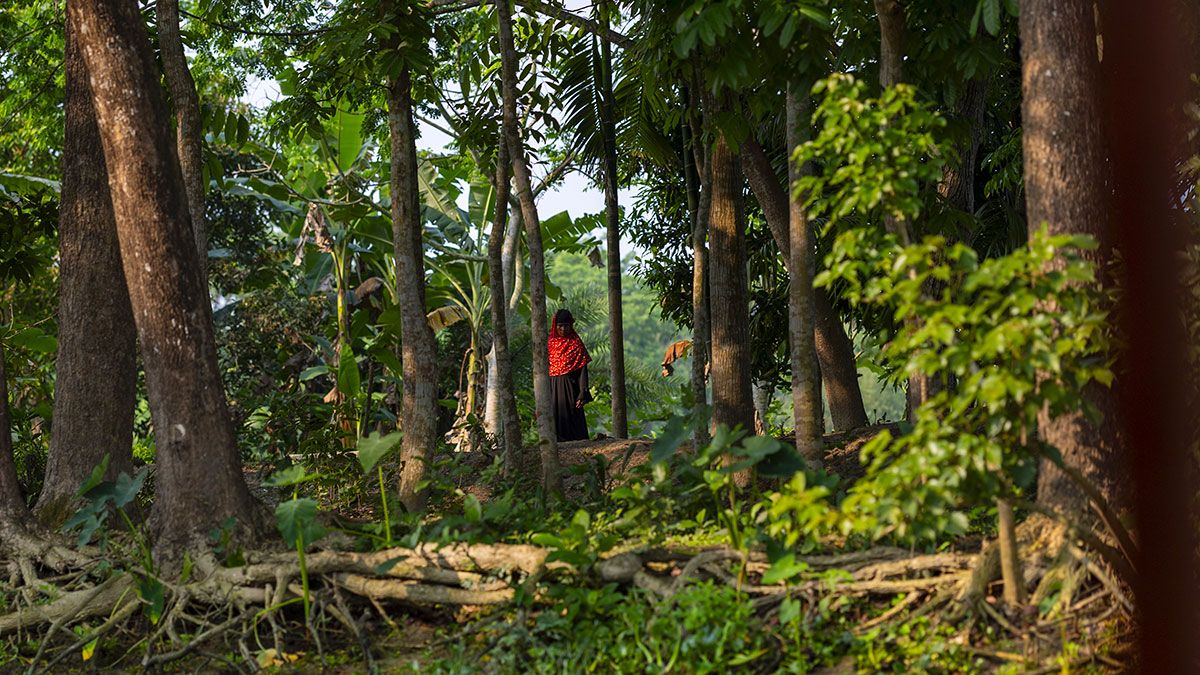
If fashion wants to turn the tide on the climate crisis, it needs to address greenhouse gas emissions. But fashion tends to view these emissions in isolation from the industry’s environmental footprint.
The result is rivers polluted with toxic chemicals, ecosystems ravaged by deforestation and soil health so degraded it can’t produce the very raw materials fashion relies on. Scientists now also agree that net zero can only be achieved if nature loss is prevented and — where possible — reversed, allowing it to continue to act as our most significant carbon sink.
“Climate and nature are two sides of the same coin,” says Beth Jensen, senior director of climate and nature impact at Textile Exchange, which today issued a rallying cry to fashion brands and suppliers to set science-based targets for nature. The non-profit wasn’t involved in the creation of the science-based targets for nature methodology, which was formally published at the end of last year, but says it is uniquely positioned to translate them for the fashion industry. “If you ignore nature, you’re missing the full picture of impact and opportunities for impact reduction.”
The concept behind science-based targets for nature, which address issues like biodiversity, soil health, freshwater and impacts on animal welfare, was introduced by the Science Based Targets initiative (SBTi) and its subsidiary Science Based Targets Network (SBTN) in 2020. Concrete targets — and their first industry applications — later came in 2023, when 17 global brands, including LVMH, Kering, L’Occitane and H&M Group, signed up for a pilot programme. Kering later became the first fashion company to formally adopt the targets, but widespread adoption has remained elusive.
In its 2024 Materials Benchmark survey, Textile Exchange found that 52 per cent of responding brands and suppliers had set science-based targets for climate, but only 7 per cent had set science-based targets for nature. The non-profit is hoping that by breaking down how to apply science-based targets for nature to fashion supply chains and gathering feedback from fashion companies, it can help drive progress — not only towards its own Climate+ strategy but also fast-approaching global sustainability goals, which fashion is on track to miss.
Where should brands start?
Brands shouldn’t necessarily jump straight into setting targets, says Jensen. SBTN outlines a five-step approach that starts with assessing and measuring nature-related impacts, followed by prioritising different areas of concern in the value chain, collecting baseline data and publicly disclosing targets, acting to implement these targets, and finally tracking and verifying progress.
Textile Exchange’s guidance focuses on step three, how to set appropriate targets. By entering into this process, brands will be asked to consider the following: what are the main materials used by the organisation? Where and how are these materials grown or produced? What regions or ecosystems does production rely on for materials? What are the highest impacts on nature in these sourcing geographies? Is there a relevant certification standard, and how does it address relevant biodiversity risks? Does this align with brand expectations and sourcing policies?
